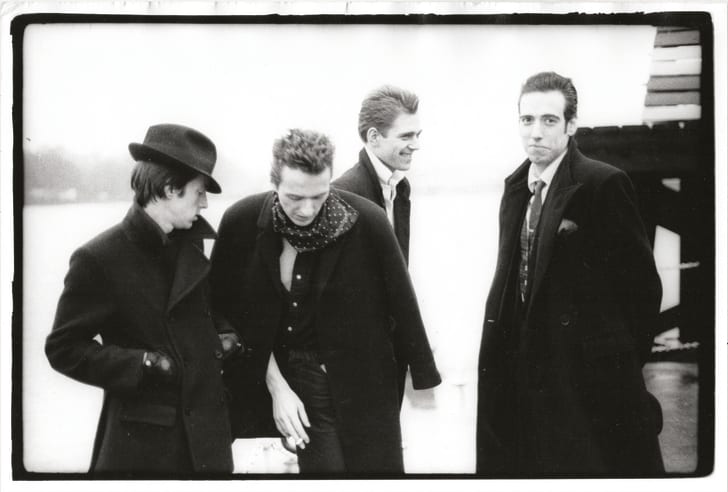Many of us first encounter Sister Rosetta Tharpe—now deservedly known as the “Godmother of Rock and Roll”—in footage from her 1964 appearance on a Manchester railway platform. She arrives by carriage, struts out before a dilapidated train station, plugs in her custom Gibson SG, and belts out in her powerful soprano, “Didn’t it rain, children!” for an audience of spellbound Brits. The televised performance, part of The American Folk Blues Festival that toured the country between 1963 and 1966, made a significant impression on blues and rock guitarists of the Invasion generation.
Yet Tharpe’s influence extends a generation further back, to rock and roll’s acknowledged forefathers. She was 49 when Keith Richards and Eric Clapton had the chance to see her on TV, and had been touring Europe since 1957, reviving a career she launched in 1938 when she released her first single, “Rock Me,” and took the stage as a regular performer at the Cotton Club.
Born Rosetta Nubin in Arkansas in 1915, she started performing in churches and revivals at 6, and scandalized many of her gospel fans by singing secular music. But her forceful, soaring voice and innovative guitar playing mostly drew them back again, along with thousands of secular admirers.
She was a rock and roll pioneer in every respect: a gospel singer who crossed over onto the popular charts, a black queer woman playing the fierce lead for mixed audiences during segregation, fronting touring bands that included the all-white Jordanaires, best known for later backing Elvis. She was “America’s first gospel rock star,” notes the Rock & Roll Hall of Fame introduction above, before there were such things as rock stars. Her 1945 single “Strange Things Happening Every Day,” with its “hot guitar solo,” Will Hermes writes at Rolling Stone, “was the first gospel single to cross over on the Billboard race charts” and is sometimes cited as the first rock and roll song.
The following year, she met singer and piano player Marie Knight. The two became lovers, recorded “Up Above My Head,” and toured together in the late 40s as a team before Tharpe married her third husband at Washington, D.C.’s Griffith Stadium in front of 25,000 fans. At the height of her fame, “she influenced innumerable… people who we recognize as foundational figures in rock and roll,” says biographer Gayle Wald. Johnny Cash named her as his favorite singer. “Everyone from Jerry Lee Lewis to Aretha Franklin” to Little Richard “credit her musicianship as an important influence on them,” writes Erin White at Afropunk.
But it was her guitar skills that most awed musicians like Chuck Berry and Elvis. Presley “loved Sister Rosetta,” the Jordanaires’ Gordon Stoker remembers, especially her playing. “That’s what really attracted Elvis: her pickin’.” Tharpe’s style contains within it a treasury of the early 20th-century American popular music that would transmute into R&B, rockabilly, and rock and roll—from western swing to country to gospel to jazz to the blues. At the top of the post, see a compilation of solos from her televised appearances, including some serious shredding in later concerts in the late sixties, broadcast in color.
Tharpe continued to tour the continent until 1970, when she played her last concert in Copenhagen. She died three years later, nearly obscure in her home country, her legacy overshadowed by male artists. But we should hear her in Chuck Berry’s first records, and “when you see Elvis Presley singing early in his career,” says Wald, “imagine he is channeling Sister Rosetta Tharpe.” Thanks to revived interest in Tharpe herself—from Wald’s 2008 biography to her 2018 induction in the Rock & Roll Hall of Fame—the “Godmother of Rock and Roll” continues inspiring new players to pick up the guitar, especially those who aren’t used to seeing guitarists who look like them in guitar hero history.
Related Content:
Watch Rock Pioneer Sister Rosetta Tharpe Wow Audiences With Her Gospel Guitar
Revisit The Life & Music of Sister Rosetta Tharpe: ‘The Godmother of Rock and Roll’
New Web Project Immortalizes the Overlooked Women Who Helped Create Rock and Roll in the 1950s
Muddy Waters and Friends on the Blues and Gospel Train, 1964
Josh Jones is a writer and musician based in Durham, NC. Follow him at @jdmagness.





